Tesla's Robotaxi: The Dawn of Commercialization
![]() 06/12 2025
06/12 2025
![]() 565
565
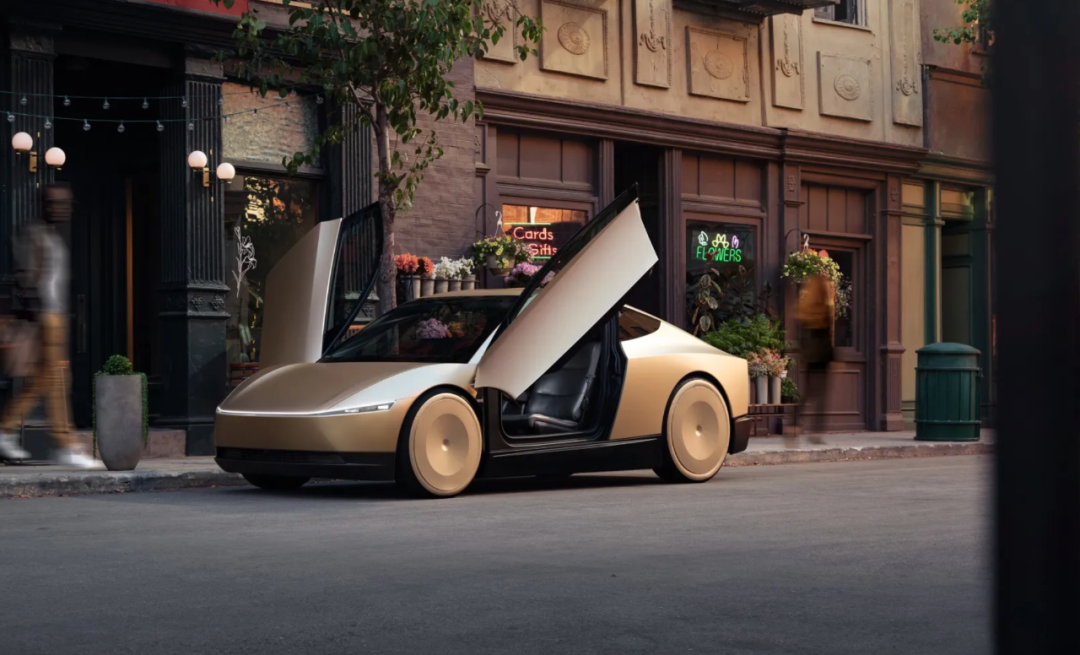
Tesla's Robotaxi is finally ready to serve the public.
On June 11, local time, Tesla CEO Elon Musk announced that Robotaxi services would tentatively be offered to the public on June 22, subject to potential changes due to safety considerations.
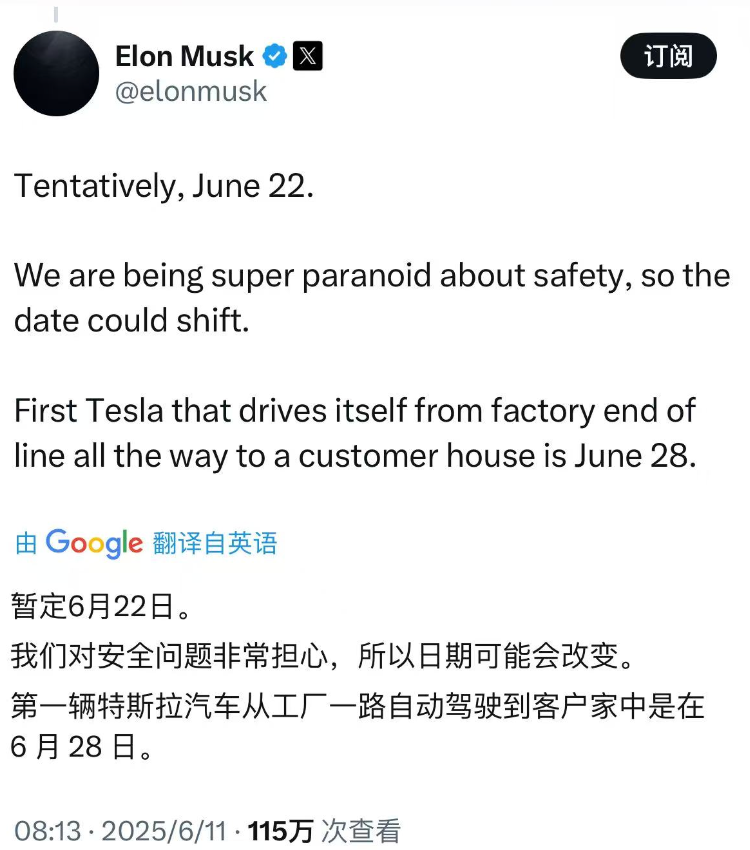
Musk revealed that Robotaxi services would tentatively commence on June 22.
Additionally, he announced that on June 28, the first Tesla vehicle would autonomously navigate from the factory to a customer's home.
Musk's plan envisions Robotaxi services launching first in Austin, with an initial fleet of about 10 to 20 Model Y vehicles operating within a designated area under remote human supervision. The fleet is projected to expand to 1,000 vehicles within a few months and later extend to other US states, including San Francisco, Los Angeles, San Antonio, and California.
The Austin Transportation and Public Works Department's official website also indicates that Tesla has been listed as a Robotaxi operator, currently in the "testing" phase, while Waymo is in the "deployment" phase.
This time, Tesla's Robotaxi seems poised for reality.
01
Road tests have shown that Musk anticipates Robotaxi becoming ubiquitous within two to three years.
As early as May this year, Musk stated that Tesla had been testing its autonomous vehicles on public streets in Austin.
Shortly before announcing the tentative launch date of June 22, Musk shared a video on the social platform "X," depicting a Model Y turning at an Austin intersection. The vehicle, still equipped with a steering wheel but sans human driver, bore the words "Robotaxi" on its body, with another Model Y closely trailing behind.

Tesla's Robotaxi undergoing testing in Austin.
He noted that these were unmodified Tesla vehicles straight from the factory, implying that every Tesla rolling off the assembly line could achieve autonomous driving.
Currently, the FSD version on Robotaxi vehicles differs from that of passenger vehicles. The former utilizes an internal beta version of FSD, but it will soon merge into the main branch.
"We have a more advanced model in the Alpha stage (internal beta stage)," Musk said. This model, still in its nascent stages of development, boasts capabilities that are 4.5 times more advanced than the current model, but algorithms and other aspects require significant optimization and improvement, with a projected rollout within the year.
According to Bloomberg, Tesla Model Y vehicles with Robotaxi capabilities are currently operating primarily in Austin's southern and southeastern regions, areas teeming with residential zones and retail shopping centers, just minutes from downtown. In some instances, these vehicles follow seemingly circular routes.
The report also stated that an unauthorized source familiar with the plan revealed that the initial operating area might cover only a few square miles. This area could change before the service's launch or be swiftly modified post-launch.
Despite being in its infancy, Musk is highly confident about the future prospects of Tesla's Robotaxi. He believes that autonomous vehicles will become ubiquitous globally within 2 to 3 years.
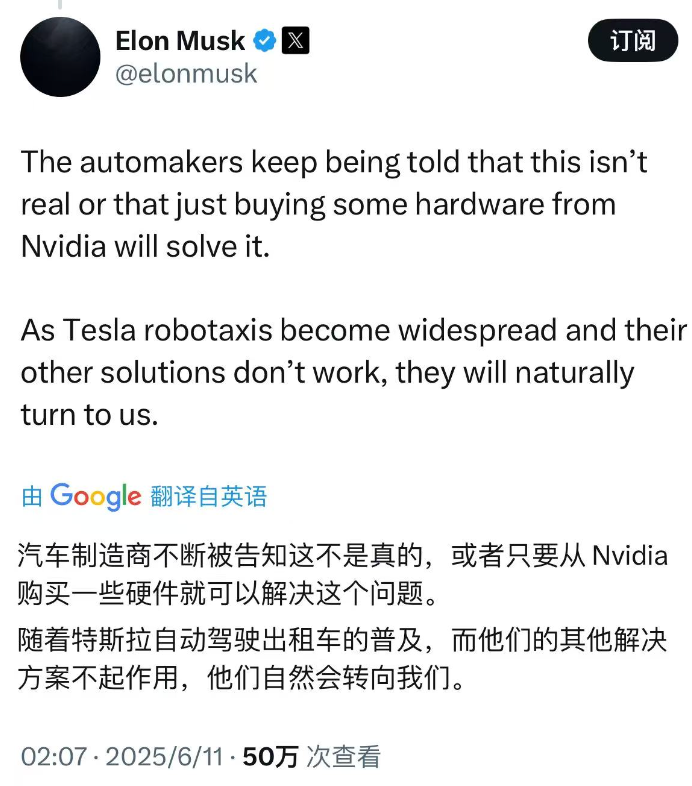
Musk believes that with the proliferation of Robotaxi, some automakers might turn to Tesla.
In his view, as Tesla's Robotaxi gains traction, other automakers will naturally opt for Tesla if their solutions fall behind. This suggests that Tesla's FSD might be licensed externally.
Although Musk posted several updates in quick succession, seemingly divulging much, the information disclosed remains quite limited. Details regarding Tesla's Robotaxi operating locations, remote monitoring scope, and public access to the service will only become clear once the service is operational.
02
"A decade of honing a sword," Tesla aims to compete in the mobility market.
Tesla's Robotaxi plan has been in the works for a considerable time. Unlike companies like Luobo Kuaipao and Waymo, Tesla hopes to introduce a C2C model where vehicles with autonomous driving capabilities "venture out" to earn money for consumers.
In 2016, Musk first introduced the concept of Robotaxi in "Master Plan Part Deux," outlining plans to develop autonomous driving technology 10 times safer than human manual driving; operate Robotaxi fleets in high-demand cities, and integrate fully autonomous Tesla vehicles into a taxi service network called "Tesla Network," encompassing not only Tesla's own vehicles but also idle vehicles that private Tesla owners are willing to share.
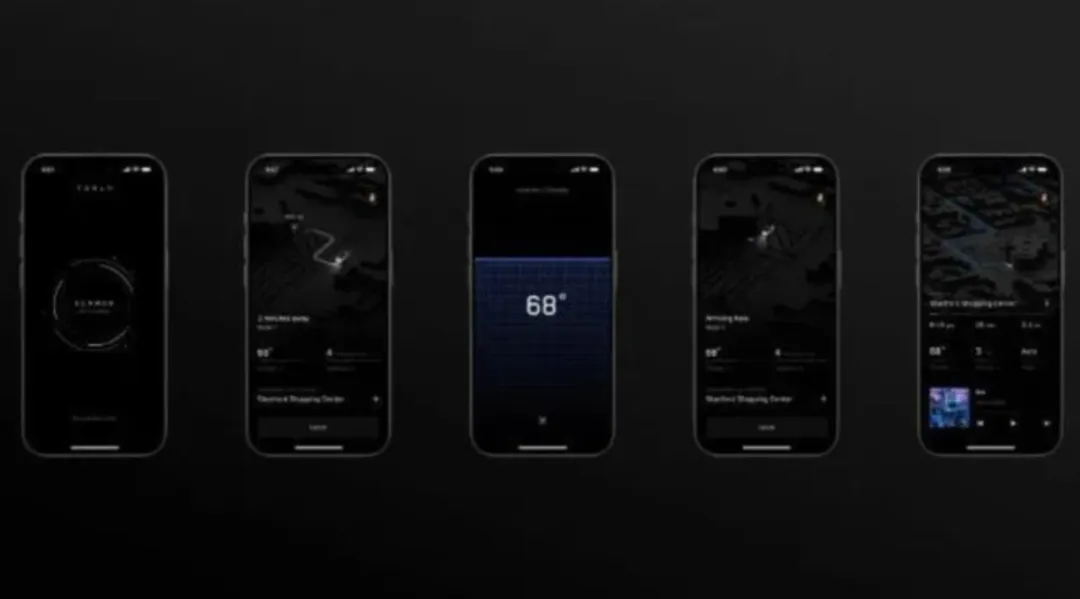
A preview of Tesla's autonomous ride-hailing app.
In April 2019, during Tesla's Autonomy Day event, Musk further announced an ambitious plan to launch the Robotaxi project in 2020.
At that time, he predicted that by mid-2020, approximately 1 million Tesla vehicles with full autonomous driving capabilities would be on the road, and owners could join the network to earn income, potentially generating up to $30,000 per year.
However, due to technical challenges, safety assurances, regulatory approvals, data and hardware limitations, among other factors, the launch timeline for Tesla's Robotaxi has been repeatedly postponed.
In April 2022, Musk revealed during a company earnings call that mass production of Robotaxi would be delayed until 2024.
By 2024, Musk announced on social media that Tesla planned to launch Robotaxi on August 8 of that year and that Tesla would invest over $10 billion in autonomous driving technology that year. Subsequently, Tesla pushed back the release date to October.
On October 11 of the same year, Tesla finally unveiled the Cybercab. The new vehicle, devoid of a steering wheel, pedals, or rearview mirrors, features gull-wing doors, giving it a futuristic two-door coupe appearance.
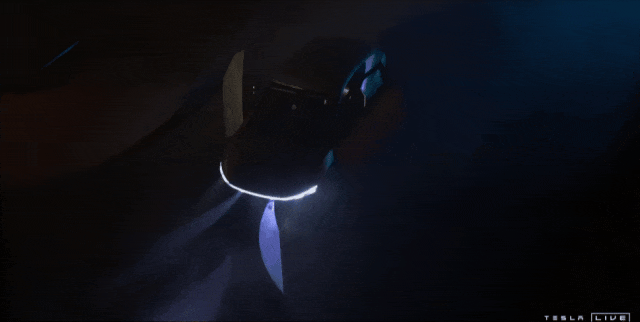
Tesla Cybercab.
Musk stated that the Cybercab is expected to cost less than $30,000 and is projected to commence production by 2026, with a widespread rollout no later than 2027.
The primary reason Tesla is devoting significant attention to Robotaxi is its aspiration to capture a larger share of the mobility market by reducing costs.
According to Musk, the current operating cost of an autonomous taxi might be as low as $0.20 per mile (or $0.30 to $0.40 per mile after taxes), which is less than the current transportation cost in the US of $1 per mile.
Simultaneously, facing fierce competition in the electric vehicle market and a volatile political landscape, Tesla's competitive edge is gradually waning, making the development of Robotaxi an inevitable choice for Musk.
Musk's previous vision also aligns with this, with Robotaxi and Optimus becoming two major business segments in Tesla's new chapter.
At the 2024 shareholder meeting, Musk emphasized that "Robotaxi will augment the company's market value by $5 to $10 trillion, coupled with the contribution of the humanoid robot Optimus, ultimately making Tesla's total market value 10 times that of Apple's current value, exceeding $30 trillion."
03
Amid Uber CEO's doubts, Tesla holds three "wild cards".
The narrative sounds promising and lucrative, but the reality is harsh.
Uber CEO Dara Khosrowshahi has publicly expressed skepticism about Tesla's Robotaxi model.
In Khosrowshahi's view, Musk's vision harbors "three major issues".
First, how to address the issue of overlapping demand times for vehicle usage. He explained that "when you wish to use Tesla's Robotaxi, it might coincide with the time when the car owner needs the vehicle themselves."
Second, how to overcome the psychological barriers of car owners. He believes that some Tesla owners might be reluctant to let strangers ride in their cars, and there's a risk of items being lost.
Third, how to establish a system that satisfies both passengers and drivers. "Besides policy-level hurdles, it is not easy for Tesla to build a Robotaxi service infrastructure of its own size," Khosrowshahi said, noting that Uber spent 15 years and invested tens of billions of dollars to achieve this.
In his opinion, Tesla's current focus on businesses like automobiles and AI is vastly different from mobility services themselves. "Constructing a $50,000 hardware (like a car) is a 'very different business' compared to handling over 30 million transactions per day."
Musk obviously disagrees with this perspective, believing that he possesses superior data, computing power, and cost advantages, which are conducive to the success of Robotaxi.
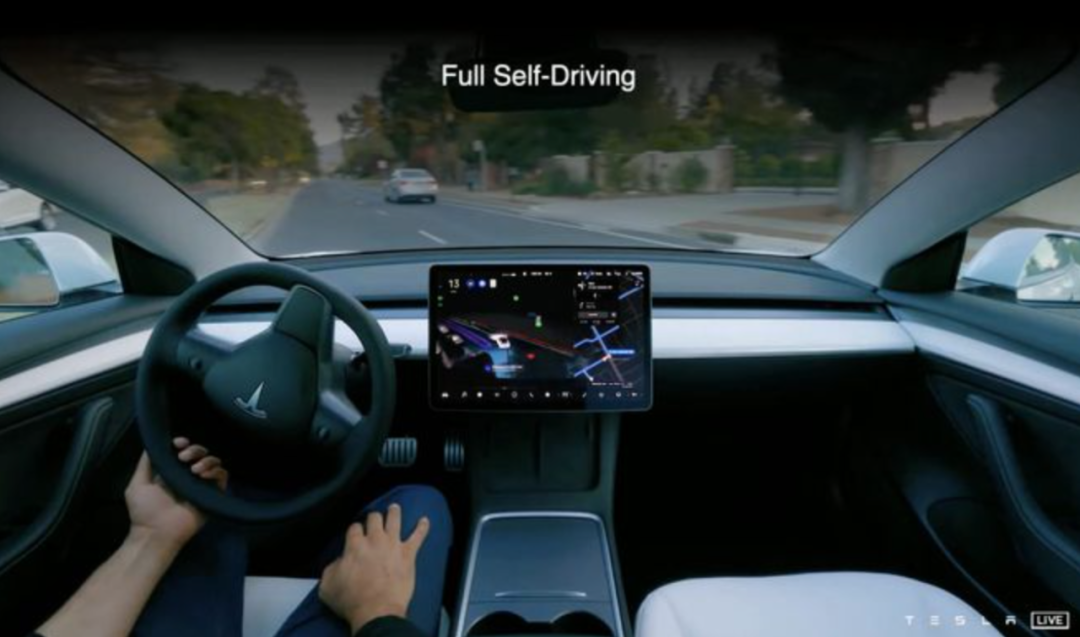
Tesla demonstrates its FSD technology.
In terms of data, as of March 28 this year, Tesla's FSD has accumulated over 3.6 billion miles of driving. In 2024 alone, FSD drove 2.16 billion miles.
Regarding computing power, Tesla's AI computing capacity is expanding rapidly. As of June 2024, Tesla's AI training computing power capacity is equivalent to approximately 40,000 H100 GPUs, and the computing power scale is anticipated to reach nearly 90,000 H100 chip equivalents by the end of 2024 to support autonomous driving training.
Li Qiang, vice president of Alibaba Cloud Intelligence Group and general manager of the AI automotive industry, once stated, "At the end of December 2024, we surveyed the computing power of global automakers. It presents both a minor regret and a significant growth opportunity for us in the future." Li noted that Tesla's computing power is almost on par with that of major domestic automakers focusing on autonomous driving. This indicates that Tesla has more opportunities for redundancy, innovation, and trial and error.
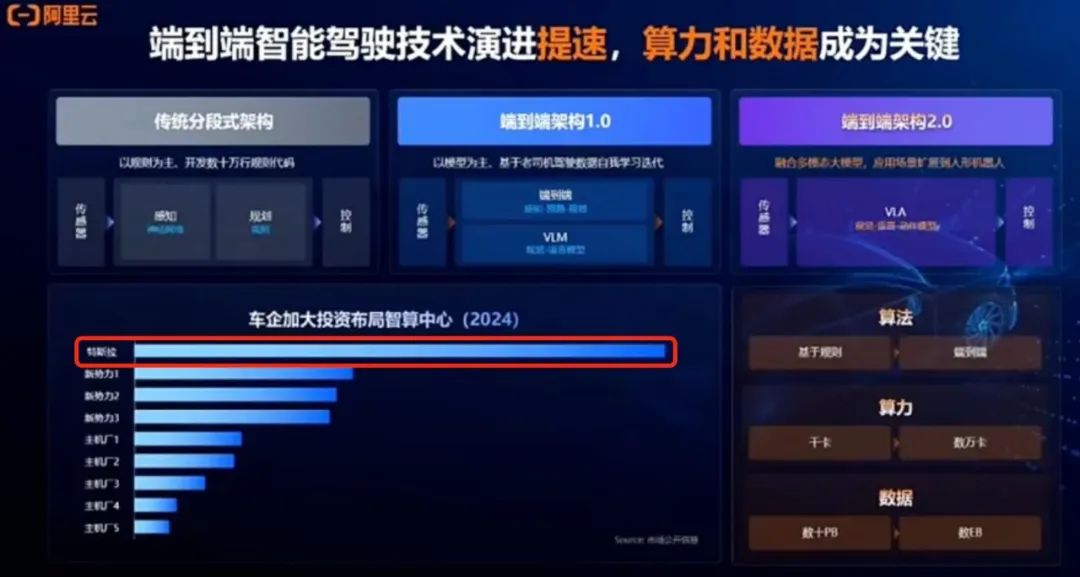
Tesla's computing power stands out.
Simultaneously, FSD and Robotaxi will form a synergy. On one hand, Robotaxi data will enhance the FSD's road data collection database, aiding in the iteration of the current FSD algorithm; on the other hand, with Tesla's current technical accumulation and extensive validation in the FSD field, Tesla is expected to swiftly catch up with Baidu and Google in the Robotaxi domain.
In terms of cost, Tesla plans to disrupt traditional automotive assembly techniques and produce Robotaxi using a method akin to "building with LEGO," which is anticipated to significantly reduce production costs.
Now, with the confirmation of the service timeline, Tesla's Robotaxi will officially embark on its commercialization journey, which will, to a certain extent, help propel the business model of autonomous taxis forward.
END-







